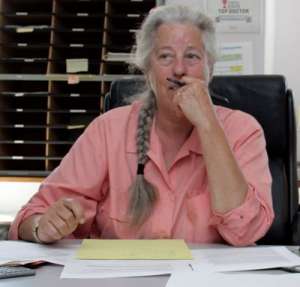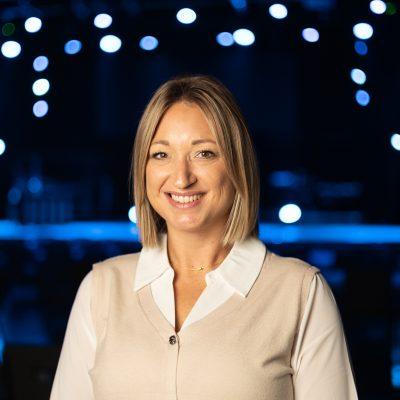High-Tech Imaging Peers Into Qigong Healer's Brain

Published
When Guan-Cheng Sun was 6 years old and sickly, his maternal grand-uncle tied him upside-down from a tree to cure his digestive and breathing troubles. He raised his arms in a series of motions to send life energy, or qi, into the boy. He worked under the cover of night, since this was rural China during the Cultural Revolution and Daoist rituals were forbidden.
After several weeks of these sessions, Guan-Cheng's illness vanished. At age 9, his grand-uncle began teaching him his healing practice, one of many diverse health traditions captured under the term qigong.
Guan-Cheng Sun, PhD, knows the tree ritual may sound suspicious to a trained scientific mind. He was skeptical himself, questioning the story while he earned a doctorate in molecular genetics in Japan. He went on to conduct research at the University of Washington (UW) and become a scientist at the Bastyr University Research Institute. The questions stayed with him, but he never dismissed the medicine of his childhood.
"We know that qigong works," he says in his Bastyr office. "We don't know how it works."
Now he's trying to find out.
Last year, Dr. Sun lay on his back and slid into the white mouth of a giant circular machine at the University of Washington. The device, a functional magnetic resonance imaging machine (fMRI), has become one of the hottest tools in neuroscience in recent years. Where a regular MRI records static images of organs and tissue in the body, an fMRI captures the changes in neural activity inside a subject's brain. As Dr. Sun performed meditation techniques, the machine recorded images of the activity in his brain.
That wasn't all. Three miles away, at UW's South Lake Union imaging laboratory, Bastyr naturopathic medicine student Dawn Reardon entered another fMRI machine, where she waited passively for Dr. Sun to transmit energy to her. Six-inch lead walls encased each of their rooms to prevent outside electromagnetic signals from interfering.
As Dr. Sun received randomized instructions from a computer, he sent "large intestine qi," "heart qi" and "kidney qi" to his patient across town. With the help of modern technology, an ancient but little-understood medicine could finally be measured.
"This technology is kind of the microscope of the 21st century," says Clark Johnson, PhD, a UW research associate professor emeritus who provides fMRI expertise for the project. "It's a way to look at brain functioning without any invasive techniques."
Activating Cancer Tumors
 No one is more interested in the study than Leanna J. Standish, PhD, ND, LAc, FABNO, one of Bastyr's most accomplished research professors and a clinical professor at the UW School of Public Health. She has long held an interest in consciousness and the interpersonal energy that medical science has largely ignored. Her research into various spiritual healing traditions, such as Reiki and prayer healing, convinced her that qigong may be the most promising for further study. Recent work with Dr. Sun is encouraging, she says.
No one is more interested in the study than Leanna J. Standish, PhD, ND, LAc, FABNO, one of Bastyr's most accomplished research professors and a clinical professor at the UW School of Public Health. She has long held an interest in consciousness and the interpersonal energy that medical science has largely ignored. Her research into various spiritual healing traditions, such as Reiki and prayer healing, convinced her that qigong may be the most promising for further study. Recent work with Dr. Sun is encouraging, she says.
"We don't have the full analysis done, but we know that when Dr. Sun sends qigong energy, his brain is completely, totally active," Dr. Standish says. "I've never seen such an active brain image."
The team found that distinct parts of Dr. Sun's brain were activated when he focused on different organs in his patient's body, a discovery they want to explore further. The team has not fully analyzed the results of what happened to Reardon's brain at the second site. In a previous fMRI study, Dr. Sun directed qi at patients with brain cancer. Results indicated he was able to change the vibration of their tumors from outside the room. If it's possible to activate cancerous tumors with a nonsurgical method, it raises the possibility of shrinking them away.
The research team stresses that its results are preliminary. Their studies must be repeated and expanded to larger test groups. The brain cancer project, completed in 2011, was a pilot study, involving two qigong practitioners, four cancer patients and two healthy subjects.
"We're clearly finding that something's going on," says Dr. Johnson of UW. "But it's really hard to show it consistently, which is what science demands."
 Meditating inside a whirring machine isn't simple, says Reardon, a fourth-year naturopathic student who practiced qigong with Dr. Sun for months in preparation. "Sensing qi in the body is subtle," she says. "The fMRI is not subtle. There was a giant magnet spinning above my head, and cords from a heart-rate monitor vibrating against my body."
Meditating inside a whirring machine isn't simple, says Reardon, a fourth-year naturopathic student who practiced qigong with Dr. Sun for months in preparation. "Sensing qi in the body is subtle," she says. "The fMRI is not subtle. There was a giant magnet spinning above my head, and cords from a heart-rate monitor vibrating against my body."
After working on several mind-body investigations at Bastyr, Reardon plans to combine naturopathic practice and research in her future career.
A Long Path of Discovery
Bastyr has funded the qigong projects to date, but further studies will require outside funding. That's a challenge for such unconventional research, although a growing body of evidence suggests qigong warrants investigating. A Bastyr randomized, controlled clinical trial found that qigong therapy may help type 2 diabetes patients control their blood-sugar levels. A recently published study from the same team suggests qigong also yields psychological benefits for diabetes patients.
For Dr. Sun, it's been gratifying to see a lifelong practice produce remarkable brain scans. "I didn't expect anything from this experiment," he says. "It was a surprise to everybody. This could bring new perspectives on the function of the body at the energetic level. That's very exciting."
Qigong often involves slow, subtle movements, although it can be practiced in stillness, as Dr. Sun demonstrated in the fMRI machine. Different strains of qigong are passed through a family lineage — and rarely revealed to outsiders. Dr. Sun partially put aside his interest during his graduate studies, but returned to it after moving to Seattle (there are no trees or tying involved in his method).
Teaching students who are quick to ask questions helps him cultivate an inquisitive mind, he says.
"They want to know 'Why are your hands facing up and not down? Why are you breathing through the nose and not the mouth?'" he says.
He says that spirit of questioning has helped the team of Bastyr and UW researchers find new lines of inquiry for more than a decade. For Dr. Standish, who is the medical director of the Bastyr Integrative Oncology Research Center, those questions take on urgency when applied to chronic diseases like cancer.
"I myself am not totally convinced," she says. "The value of this work is to be able to study qigong, quantify it, and find out who can heal and who can't. Is it really possible, like qigong masters say, to heal someone with advanced cancer just by syncing your energy with theirs?
"We need to find out."
---
Learn more about Bastyr's naturopathic medicine and Oriental medicine programs and qigong continuing education courses.


